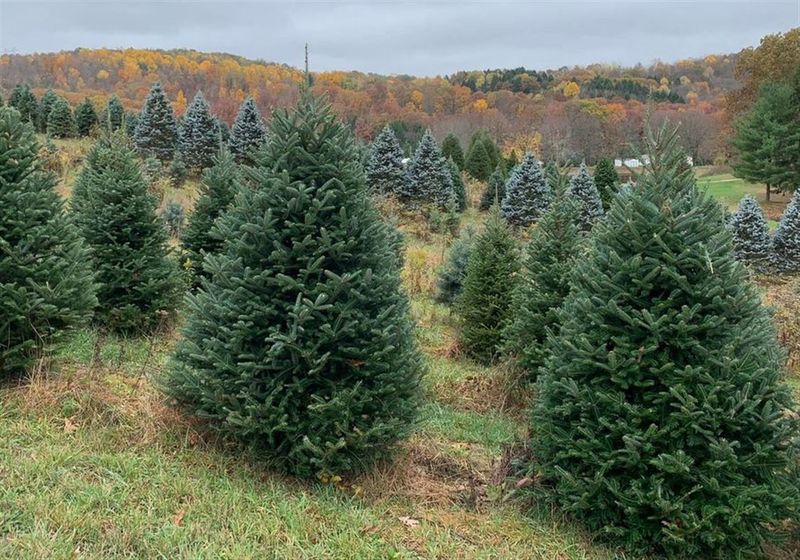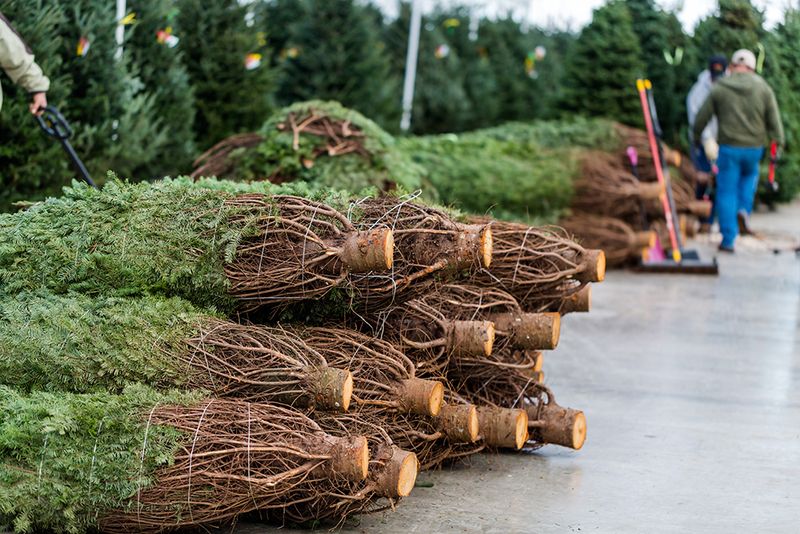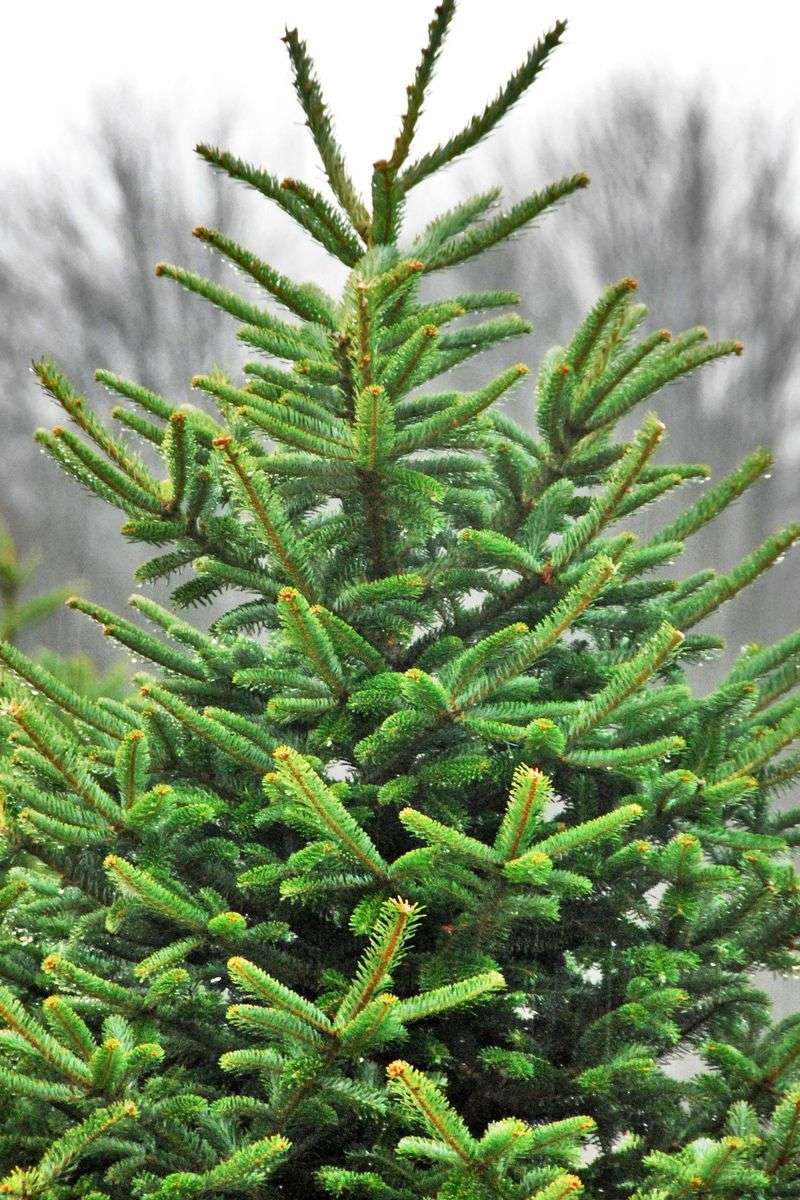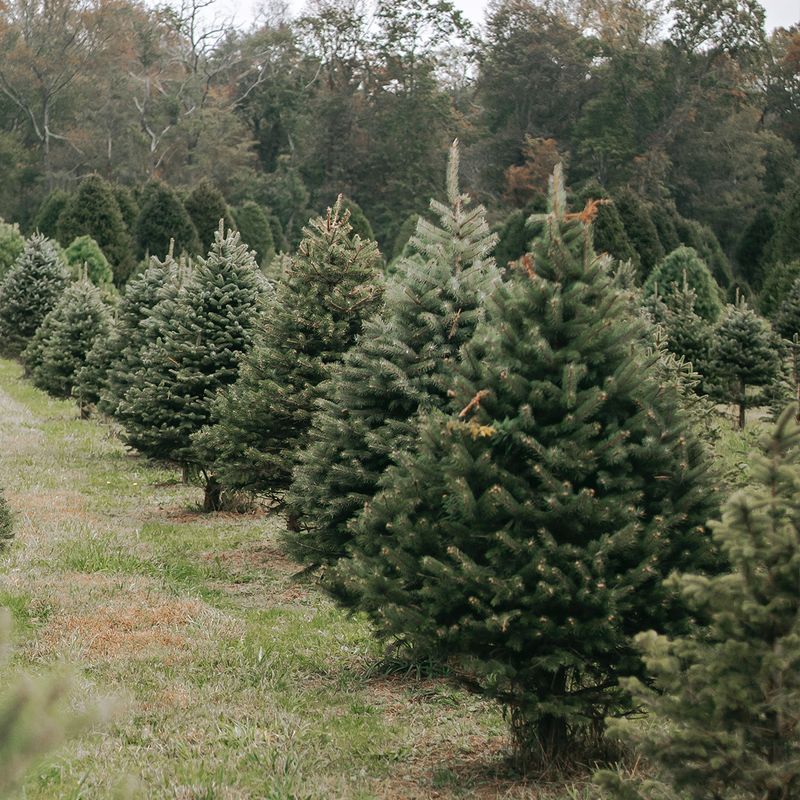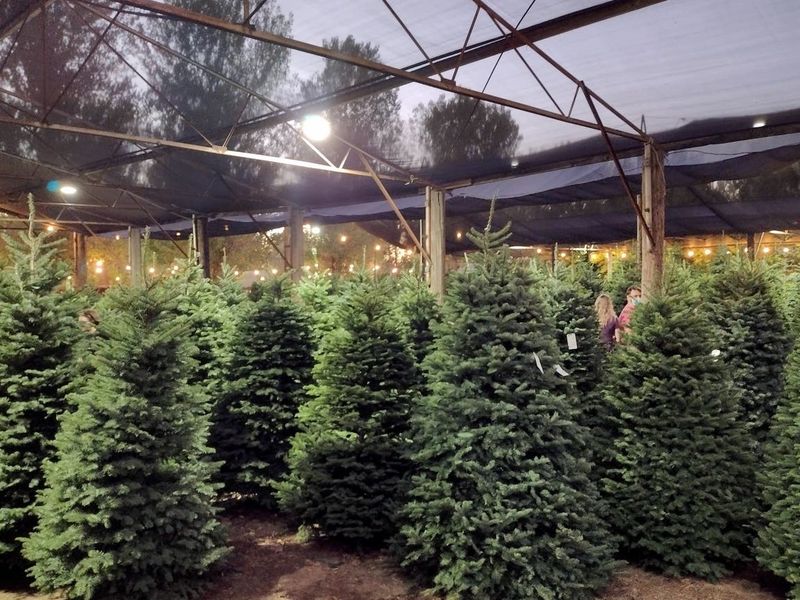I’ve picked out plenty of Christmas trees over the years, and I’ve learned that finding the right one takes a little more know-how than just grabbing the tallest one on the lot.
I’ve brought home trees that dropped needles faster than I could sweep and others that lost their shape before the lights were even up.
Eventually I figured out the small signs that separate a fresh, long-lasting tree from one that’s already past its prime.
Now I can spot a winner at a glance, and choosing a live Christmas tree feels more like a holiday tradition than a guessing game.
1. Needle Freshness
Ever run your hand along a tree branch and watch a bunch of needles fall off? That’s a bad sign.
Fresh needles should be flexible, not brittle, and they should stay firmly attached to the branch even when you give it a gentle tug.
When you bend a needle between your fingers, it should feel springy and bounce back instead of snapping in half.
A good test is to grab a branch near the trunk and pull your hand toward the tip.
If tons of needles come off in your hand, that tree has been sitting around too long.
You want a tree that holds onto its needles tightly and the color matters too.
Look for rich green needles without any brown or gray patches.
Some varieties have a bluish tint, which is totally normal for certain types.
Fresh trees also have a wonderful piney scent that fills the air.
If the tree doesn’t smell like much or has a musty odor, it’s probably past its prime.
Your tree should look vibrant and alive, not sad and tired.
Taking a few extra minutes to check needle freshness will pay off when your tree still looks gorgeous on Christmas morning.
2. Overall Shape And Fullness
Picture this: you bring home what looks like a decent tree, set it up in your living room, and suddenly realize one whole side is basically bare. Awkward, right?
Before you commit to a tree, walk around it completely and check it from all angles.
Some trees look great from the front but have weird gaps or flat spots on the sides or back.
Unless you’re planning to stick it in a corner, you want a tree that looks good from every direction.
Fullness is another big thing to consider.
A sparse tree with lots of space between branches might seem easier to decorate, but it can end up looking a bit sad once the ornaments are on.
On the flip side, super dense trees can be tough to string lights through.
Find a happy middle ground where branches are well-spaced but still create that classic Christmas tree silhouette.
Height and width matter too.
Measure your ceiling before you go shopping, and remember that you’ll need space for a tree topper.
Also think about the tree stand, which adds a few inches to the overall height.
Better to go slightly shorter than to have your tree scraping the ceiling.
3. Trunk Condition
Most people focus on the branches and forget about the trunk, but this is actually super important.
The trunk is like the tree’s lifeline once you get it home.
Check the bottom where it’s been cut.
A fresh cut should look moist and maybe even have some sap visible.
If the cut looks dry, gray, or crusty, that tree has been sitting around for a while and won’t absorb water well once you put it in the stand.
The trunk should be straight and sturdy, not crooked or wobbly.
A wonky trunk makes it really hard to get the tree standing upright in your stand, and you might end up fighting with it for hours.
Nobody wants that kind of stress during the holidays.
The diameter matters too.
Make sure your trunk will actually fit in your tree stand.
Some trees have really thick trunks that won’t fit standard stands, while others might be too thin and won’t stay secure.
Ask the seller to make a fresh cut before you take the tree home.
This removes any dried-out wood and opens up the pores so the tree can drink water properly.
That fresh cut makes a huge difference in how long your tree stays healthy and beautiful throughout the season.
4. Branch Strength And Flexibility
You know those heavy ornaments you’ve been collecting over the years?
They need strong branches to hang on.
Before buying a tree, test a few branches by gently bending them. Healthy branches should be flexible and bend without cracking or breaking.
If branches snap easily when you apply light pressure, that tree is too dry and won’t hold up well.
You want branches that feel slightly bendy but still firm enough to support decorations.
The spacing between branches is worth considering too.
Branches that are too close together make decorating frustrating because there’s nowhere to hang things.
Branches spaced too far apart can make your tree look empty even with lots of ornaments.
Look for even spacing that gives you plenty of decorating real estate.
Check how the branches attach to the trunk as well.
Strong attachment points mean branches won’t droop or sag under the weight of lights and ornaments.
Different tree varieties have different branch characteristics.
Some have upward-facing branches that hold ornaments really well, while others have branches that droop naturally.
Think about your decorating style and choose accordingly.
If you have young kids or pets who might bump into the tree, stronger branches are definitely your friend.
5. Type Of Tree Species
Not all Christmas trees are the same species, and each type has its own personality.
Fraser firs are super popular because they have great needle retention and sturdy branches perfect for heavy ornaments.
Their needles have a silvery underside that catches the light beautifully.
Douglas firs have a wonderful fragrance and a more classic pyramid shape, though their needles are softer.
Scotch pines have excellent needle retention and stay fresh for weeks, plus they’re usually more affordable.
Noble firs have gorgeous blue-green needles and branches that point slightly upward, making them ideal for hanging ornaments.
They’re a bit pricier but last incredibly long.
Balsam firs are the most fragrant option and have that traditional Christmas tree look, though they don’t last quite as long as some other varieties.
Blue spruces have stunning silvery-blue needles but sharp points that can be tough on hands during decorating.
Your choice might depend on what matters most to you.
Want amazing fragrance? Go for balsam or Douglas fir.
Need something that lasts forever? Choose Fraser or Scotch pine.
Have little kids who will be touching the tree constantly? Skip the blue spruce with its prickly needles.
Each species has pros and cons, so think about your priorities before deciding.
6. Signs Of Pests Or Disease
This might sound a bit gross, but you really need to check for uninvited guests before bringing a tree into your home.
Look closely at the branches and trunk for any signs of insects, egg sacs, or webbing.
Shake the tree vigorously or bounce the trunk on the ground a few times.
If anything crawls, flies, or falls out, you might want to choose a different tree.
Most tree farms treat their trees properly, but it never hurts to double-check.
Inspect the needles carefully for discoloration, spots, or unusual patterns that might indicate disease.
Healthy needles should be uniform in color without weird patches or mold.
Check the trunk for holes, which could mean boring insects have set up shop inside.
Look between the branches too, where pests like to hide in the darker, more protected areas.
A quick inspection now prevents discovering bugs in your living room later.
Don’t panic if you see a few harmless spiders or beetles.
Many trees have some insects that are totally harmless and will either leave on their own or can be easily removed.
But if you see lots of activity or evidence of serious infestation, move on to another tree.
Your home should smell like pine, not become a nature preserve for creepy crawlies.
7. Price And Size Balance
Let’s be real for a second, live Christmas trees can get expensive, especially if you want a big, perfect specimen.
But the most expensive tree isn’t always the best choice for your situation.
Think about your space first, a massive tree might look amazing at the lot but completely overwhelm a small living room.
Measure your space before you go shopping, including ceiling height and floor space.
Remember you’ll need room to walk around the tree and open presents underneath it.
Prices vary based on tree type, size, and where you’re buying.
Tree farms often have better prices than roadside lots, and you get the fun experience of cutting your own.
Some places charge by the foot, while others have flat rates by species.
Don’t feel pressured to buy the biggest tree just because it looks impressive.
A smaller, well-shaped tree often looks better than a huge, sparse one.
Plus, smaller trees are way easier to transport and set up.
Consider your budget honestl, if money is tight this year, a smaller tree decorated with love looks just as festive as an expensive giant one.
Some families even start traditions with tabletop trees or potted living trees they can plant after the holidays.
The magic of Christmas isn’t about having the fanciest tree on the block.



